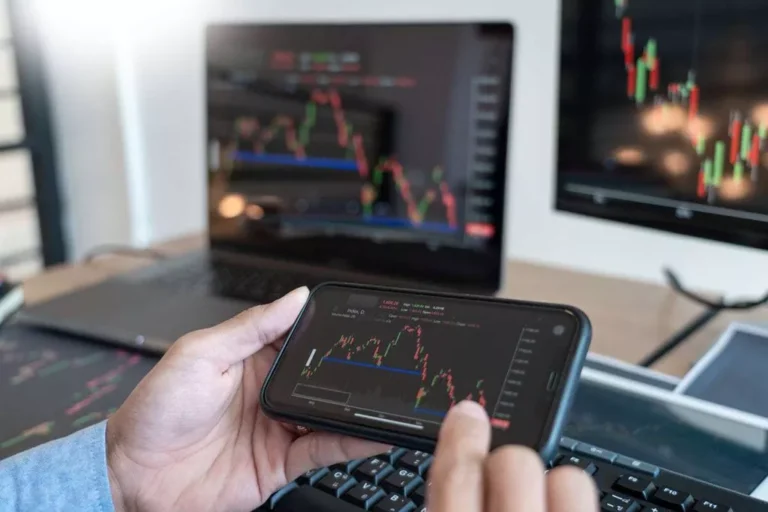Content
The main differences that you might find is that a legit Market Maker will often send requotes and https://www.xcritical.com/ will actually be regulated with a trustworthy (inland) regulator such as FCA, BaFin, ACPR (to name a few). Another difference is that you would be able to find their physical offices. Last but not least — an legit MM would let you withdraw your funds upon request whereas a scam would not. You just have to transfer funds to a broker that he’ll give you and he’ll tell you what to trade and when. The customer support team is accessible through multiple channels, including live chat, email, and phone support.
A-book vs B-book Execution: The Dark Side of the Retail Trading Industry.

Even if this practice could be considered illegal, you will be surprised of how many OTC brokers implement it. When a broker uses the A-Book business model, all of its clients’ orders are transmitted directly to the forex liquidity provider, who in Proof of stake turn routes them to the interbank market. At the same time, a trader’s profit is advantageous to the broker, since the longer they cooperate, the more money the trader brings to the broker. The trading conditions provided by A-Book brokers entail a relatively high minimum deposit to open an account. Thus, many A-Book brokers raise the minimum deposit size to $5,000 — $10,000.

How do A-Book Brokers Process Trades?
Conversely, a B-Book approach can be more suitable if your primary objective is to maximise profitability. The regulations in your jurisdiction may significantly impact your choice of broker model. A-Book, B-Book, or hybrid model criteria or limitations may be specific to certain regulators. You only need to click on the button to open an order, and a confirmation of the transaction appears on the screen. Brokers appeared with the emergence of the stock exchange, the place where buying and selling of securities occurs. From the origins to modern understanding, exchange funds have passed a long stage of evolution and modernization, changing the principles of operation a-book brokers and covering all large economic and financial processes.

Analysis of Exness’s Business Model
However, for retail traders, FOREX.com is a market maker, because we believe market making is the best way to provide our retail clients with reliable pricing at retail trade sizes while effectively managing our own risk. We are fully accountable for every execution and don’t outsource that responsibility to a third party. For small-scale retail traders, Exness often acts as a market maker, facilitating rapid trade execution without needing to route every order externally. This arrangement can result in favorable pricing and quick fill times, particularly beneficial for traders employing short-term strategies.
- A-book brokers should focus on the number of trades because each trade (of each individual client) brings the broker a profit.
- The A-Book model is a fundamentally different model of work in which there is no conflict of interest between the trader and the company.
- The reality is that the broker still takes the opposite side of Elsa’s trade.
- B-book brokers will fill us out immediately as they take the other side of our trade.
- Both variants are the features of a kitchen, which do not promise anything good to a trader.
EXNESS forex trading app is legal in India
A-Book brokers need special solution to simplify the above-described process, also known as a Liquidity Bridge. The broker ended up with a loss against the LP, who ended up with an equivalent gain. But…because the broker had offloaded its risk to the LP, the broker does not get to celebrate.
These liquidity providers can be other the interbank market, STP brokers, or even ECN brokers. The A-Book process is synonymous with a traditional brokerage role. They offer you a direct and reliable connection to the global forex market through STP (Straight Through Processing) or ECN (Electronic Communication Network) accounts. In this A-book, the broker/exchange generates revenue through spreads, swaps, maker/taker fees, and/or other optional services, such as guaranteed stop losses to prevent slippage. Nevertheless, in the A-book, the broker does not profit from your losses, but from the fees involved in facilitating your trading through their servers to the banks.
Milena Moon is the head of media projects in the marketing department of the B2Broker Group. Milena’s career began in 2018 as a freelance social media journalist. Since then, she has sought out and written about the latest crypto trends, from news in the sector to educational articles that help newcomers immerse themselves in the crypto industry in the easiest way possible. Milena also has experience and education in the TV industry, which help other B2Broker projects thrive. STX Brokers’ Fixed spread accounts won’t be A-book (these are B-book).
In other words, the entire financial market supply-chain understands very well that retailers are going to lose, and all intermediaries are eager to be the retail trader’s counterparty, including exchanges and brokers. They aim to profit from the spread they charge and the difference between the price they offer you and the price they obtain in the market. The broker did NOT send or route Elsa’s trade “directly to the liquidity provider” (which some forex brokers like to claim). CTrader by Spotware is a widely popular platform trusted by 4 million traders and 100+ brokers worldwide.
In spot trading, Interactive is the most professional option and possibly the best retail broker ever created. If you are a winning trader, this is where your trades will go. Ask them by email to show you which LPs they deal with and see how they respond. Declaring this information is confidential is like a dermatologist telling a patient that the components of a recommended drug are confidential and must be kept in private. As you can see, Elsa’s trade ended up with a big loss, which means the broker ended up with an equivalent gain.
One of the most popular alternatives among major brokers is to use a hedging strategy. Using a hybrid approach, a broker processes minor transactions inside its platform, but big transactions may be withdrawn to a liquidity provider and ultimately to an interbank. According to the A-Book model, all client transactions are transferred to an external trading platform or “interbank market,” where a liquidity provider fills the orders.
Access liquidity through a single account, simplifying processes and reducing costs. The LP is willing to buy EUR/USD at 1.2100, so the broker quotes Elsa 1.2099, to ensure it makes a profit on the transaction. This is how the grocery store makes money in exchange for providing you with a service (access to food). For example, if you trade over $100M volume per month, instead of paying $60 per $1M, you might receive a 33% discount, and your commission would be reduced to $40 per $1M. It can be charged per lot, per million USD, or as a percentage of the trading volume.
The A-Book execution model, also referred to as STP, involves brokers forwarding clients’ orders directly to liquidity providers, ensuring transparent and direct market access without any interference. With the A-Book execution model, brokers prioritize efficient order execution, fostering a trustworthy and client-focused trading environment, providing clients with deep liquidity and minimal conflicts of interest. The B-Book approach has advantages and disadvantages for traders. The main concern is the fundamental conflict of interest arising from the broker’s financial interests directly opposing the trader’s. On the other hand, B-Book brokers frequently provide fixed spreads and faster trade execution, which might be helpful in specific financial markets. It’s estimated that 80-95% of traders lose their initial investment within the first six months, seemingly supporting the B-Book model.
But…the A-Book broker ended up with a profit against the LP, who ended up with an equivalent loss. Let’s see a trade example of how a broker would offload its risk. The broker has “A-Booked” the customer’s trade and is now “covered” or “hedged”. According to some loose estimates, up to 95% of all FX/CFD brokers are considered B Book brokers, making it difficult for A Book model to compete. While the spread correlates with market rates, external events can influence it. For upcoming releases affecting the market, please refer to our Economic Calendar.